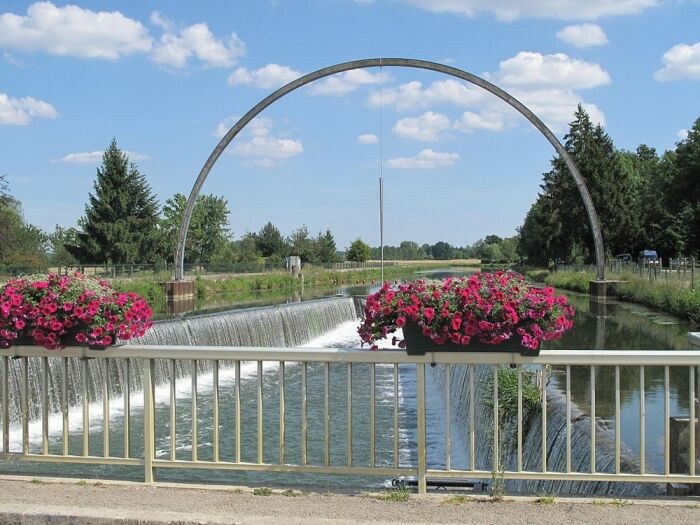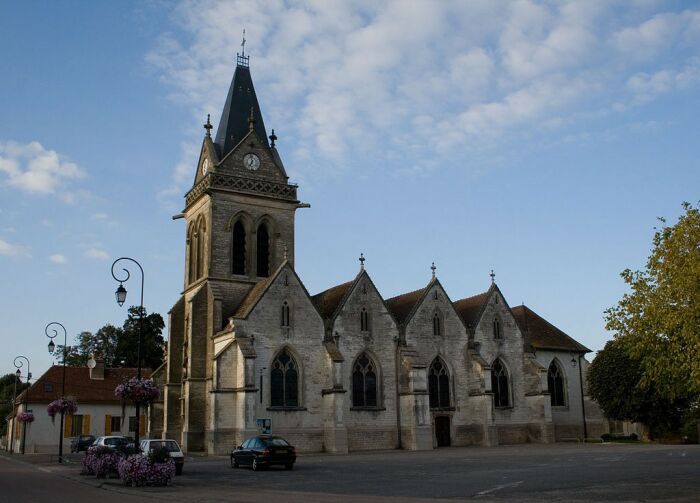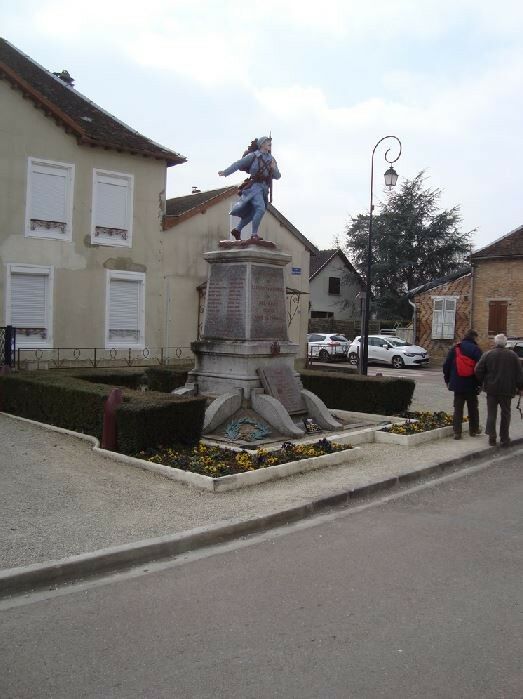Lusigny-sur-Barse
| Address |
|---|
|
Lusigny-sur-Barse |
Lusigny comes from the Latin Lusiniacus composed of the radical of a man's name "Lucini" and the Gallic suffix "ac", marking the place names. By a decree of 4 February 1919, the village established its geographical identity by adding to its name the qualifier "sur-Barse", the river on whose banks it is located. In 1999, there were 1466 Lusignians in the village (in 1790, the population was 895). The market takes place on Saturday mornings in the village square.
A little bit of geography: The municipality of Lusigny-sur-Barse, to which the hamlet of Larrivour has been added, is located at the southwestern end of Lake Orient. Its surface area covers 3792 hectares made up of agricultural areas but also vast forests forming the southern part of the humid Champagne. It is located on the departmental road 619, 15 km east of Troyes.
A little history: In antiquity, a Roman road came from Langres and headed towards the Valley of the Barbuise. It is likely that a Roman camp was set up in Lusigny, at the place called "La Fortelle". Similarly, it is possible that there was once a horse post house on the road from Troyes to Langres. It was located at the corner of rue Georges Clemenceau, which leads to the centre of the village. In the 12th century, Lusigny was a seigneury belonging to the Abbey of Saint-Loup. Lusigny was also the scene of Napoleonic campaigns. In 1814, the village was largely occupied by foreign troops, and sovereigns, such as Tsar Alexander I, established their headquarters there. The commune was chosen by the Allied sovereigns as the seat of the armistice talks on 24 February. General Flahaut represented the French army while the coalition forces were represented by General Duka, Shouvalom and Rauch. These talks will not succeed. The passage of Emperor Napoleon to Lusigny on 29 March 1814 reassured the inhabitants of the village, most of whom had been exiled since the enemy occupation. On November 11, 1948, the municipality of Lusigny-sur-Barse was named in the order of division by the award of the 1939-1945 war cross with silver star, for heroic acts of the local resistance group and its inhabitants. Lusigny included among its inhabitants the mathematician-astronomer Charles Delaunay who was Director of the Paris Observatory, a teacher at the École Polytechnique and then at the Sorbonne. A little bit of economic history: Livestock used to dominate the area (draught horses and cattle) then, in the 19th century, a tile factory was established on the territory. In the 20th century, with the emergence of the textile industry in Troyes and the advent of the railway, beautiful residences were built by the Trojan hosiery workers. Finally, around 1936, a ploughing company was created. Very quickly abandoned for economic reasons, it became a carpentry business and operated until 1987, when their creators withdrew from the business. Today, the economic activity is diversified and the commercial activity is well established.
Cultural heritage: Possible traces of a Roman camp in the Fortelle forest, forming a vast almost square quadrilateral of about 250 m on each side, partly closed by a deep ditch and partly by the Barse and a marshy meadow. Abbey of Larrivour, founded in 1135 by Thibaut II Count of Champagne, Saint-Bernard and Hatton. The abbey of monks of the order of Cîteaux, under the name of Notre-Dame, was founded on April 10, 1140 by Alain, monk of Clairvaux. In 1779, the abbey church buildings were in ruins and reconstruction was too expensive. Thus, the religious made it clear that it was necessary to demolish it. All that remains today is the water mill and the sheepfold.
Saint-Martin church built in the 16th century. In a flamboyant Gothic style, it was rethought in the 19th century in the same style, three centuries apart. The late 19th century stained glass windows are quite remarkable.
Maison Emile Simmonet: located near the church, this former presbytery, completely restored and now the Maison des Associations, welcomes walkers who wish to discover a typical Champagne house.
Arch Klaus Rinke: built by the artist of the same name, it refers to Gaston Bachelard's work "L'eau et les rêves", an essay on the imagination of matter (1942). The artist created an arch of wood and monumental metal spanning the restitution channel.
Museum of automatons where the rare collections of contemporary automatons in perfect working order are located. He regularly participates in the Salon des constructeurs et créateurs d'automates. Visits by telephone appointment. Champagne barn: beautiful 19th century construction, with wooden panels and cob, transferred from Montreuil-sur-Barse in 2000. Located in the centre of the village, it is a multifunctional space that is the pride of the Lusignians. Large, numerous and characteristic "bourgeois" houses
Last updated on 10/01/2024 - Troyes La Champagne Tourisme
Quality standards

Information
Périodes






